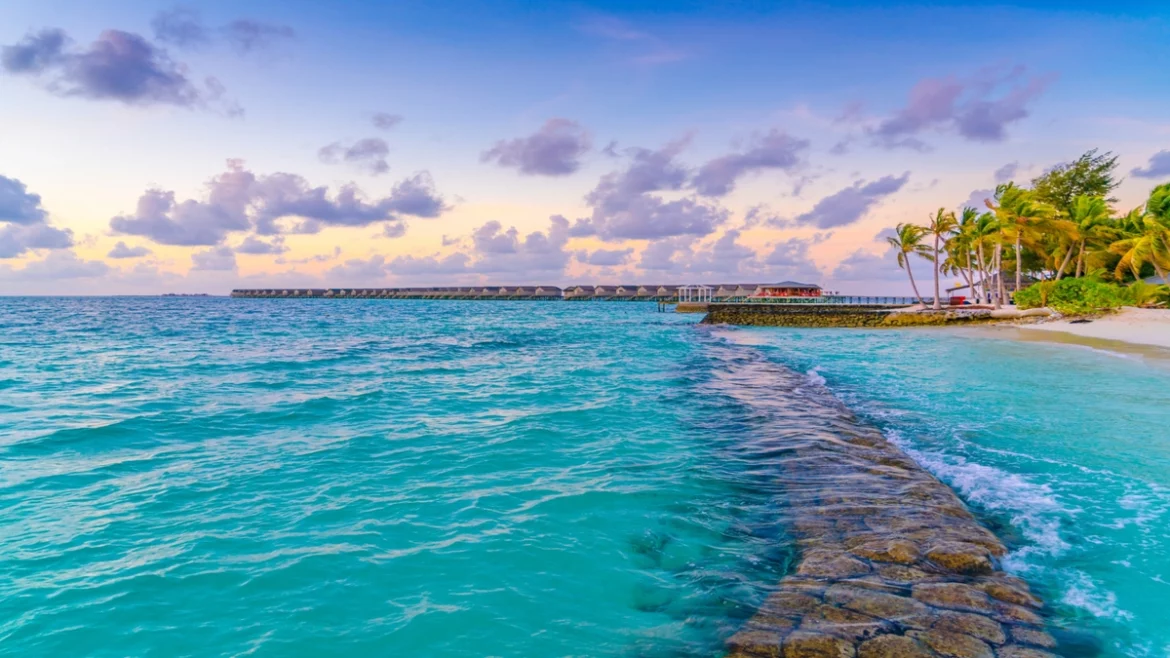Are you considering taking your next holiday to the Caribbean? The nations that surround the Caribbean Sea on islands make up the region that we refer to as “the Caribbean.” This body of water is situated north of South America and southeast of the Gulf of Mexico.
You’ll learn what makes the Caribbean Sea exceptional and distinctive in this post, which will help you to comprehend why millions of travelers visit its waters every year.
Geographical Marvel
So, where is the Caribbean Sea? Venezuela and Colombia border the Caribbean Sea on the south and Central America on the west. The Yucatan Straits connect it to the Gulf of Mexico in the north. To the north and northeast, the Caribbean Sea and the Atlantic Ocean are divided by Cuba, the Greater Antilles, and the Lesser Antilles.
Due to their dense population, more than 7000 Caribbean Sea islands in the Caribbean Sea are especially susceptible to sea level rise. In fact, due to the island’s reliance on marine and coastal resources, over half of its population resides less than 1.5 km from the ocean.
What Is the Ideal Time to Visit?
The Caribbean’s peak season lasts from December to the end of April. Average temperatures swelter in the late 20C range while prices are at their greatest points; humidity and rainfall are at their lowest. The average temperature rises to the early 30s by June, and the air becomes increasingly humid. By August, most days will likely bring rain.
The showers, which may be heavy, usually fall around the afternoon nap hour and leave behind breathtaking sunsets. With a frequency and severity peak in September and October, the Atlantic hurricane season lasts from June to November. During this time, many hotels and tourism-related companies close. That leaves the shoulder months between May and November, dubbed “secret season” by the industry, when things are cheap and the weather is often lovely.
Things to Do When You Visit
Other than lounging on beaches with fine white sand, sipping from a newly plucked coconut, and deciding between grilled fish and crab cakes for lunch? The Caribbean Sea is a watery playground. While motorized watersports are becoming less popular in the islands’ more environmentally concerned communities, more eco-friendly activities like sailing, stand-up paddleboarding, and kayaking are seeing a sharp increase in popularity.
The green motif continues inland, with activities ranging from strolls through Barbados’ botanical gardens to thrilling treks through Dominica’s Morne Trois Pitons National Park and the thrilling ascent of St Lucia’s famous Gros Piton.
If you’re an experienced diver, you should check out the diving sites in the Cayman Islands, Jamaica, and Tobago. Still, if all you want to do is get Padi-certified, there are fantastic locations to study practically every island.
The largest regatta in the Caribbean takes place at English Harbour during Antigua Sailing Week in April. The Roots & Soul Festival kicks off St. Lucia’s summer celebrations in May. Carnival takes place in July, and the world-famous Jazz Festival closes things up.
Where to Lodge?
Most vacationers choose hotels, and there are accommodations to fit every preference. The Dominican Republic and Jamaica are the best destinations for all-inclusive family resort hotels, while Antigua and Barbados’ Platinum Coast are known for their immaculate five-star service. Many honeymooners love St. Lucia’s southwest coast, particularly any location with a view of the Pitons and Anguilla’s West End. Try the North and Middle Caicos or St Vincent to feel like a castaway, although in comfort. If you want a beach with a touch of French flair, pick Saint Barthélemy, sometimes known as St Barths, Martinique, or Guadeloupe.
Regardless of your decision, keep in mind that the Lesser Antilles’ eastern coastlines, which face the Atlantic Ocean and span the chain of islands from Trinidad and Tobago in the south to the British Virgin Islands in the north, have noticeably rougher waves than their sunset sides.
4 Unknown Facts about the Caribbean Sea
-
It Belongs to the Atlantic Ocean
Archipelagos that form an arc shape, or island arcs, divide the Atlantic Ocean from the Caribbean Sea. Where the two bodies of water converge, there’s a noticeable visual distinction even though it’s officially a part of the Atlantic Ocean.
-
The Local Native Gave it Its Name
When European explorers first arrived in the region in the fifteenth century, the native American people known as “Caribs” were the source of the term “Caribbean.” But because the nearby islands are known by their Spanish name, Antillas, it was also called the “Sea of Antilles.”
-
It’s the World’s Deepest Sea
The average depth of the Caribbean Sea is 22,788 feet (6,946 meters), making it the deepest sea in the world. The Pacific, Atlantic, Indian, and Southern Oceans are the only bodies of water that are deeper.
-
It Boasts Some of the World’s Nicest Beaches
This is excellent news for those who want to holiday at the beach shortly. In Turks & Caicos, Grace Bay Beach is the best beach. It features crystal blue water without pebbles or algae and a barrier reef that calms the surf for great snorkeling.
Final Words
The Caribbean Sea blends history, culture, and nature. We must balance protection, tourism, and inspiration to sustain its beauty.


